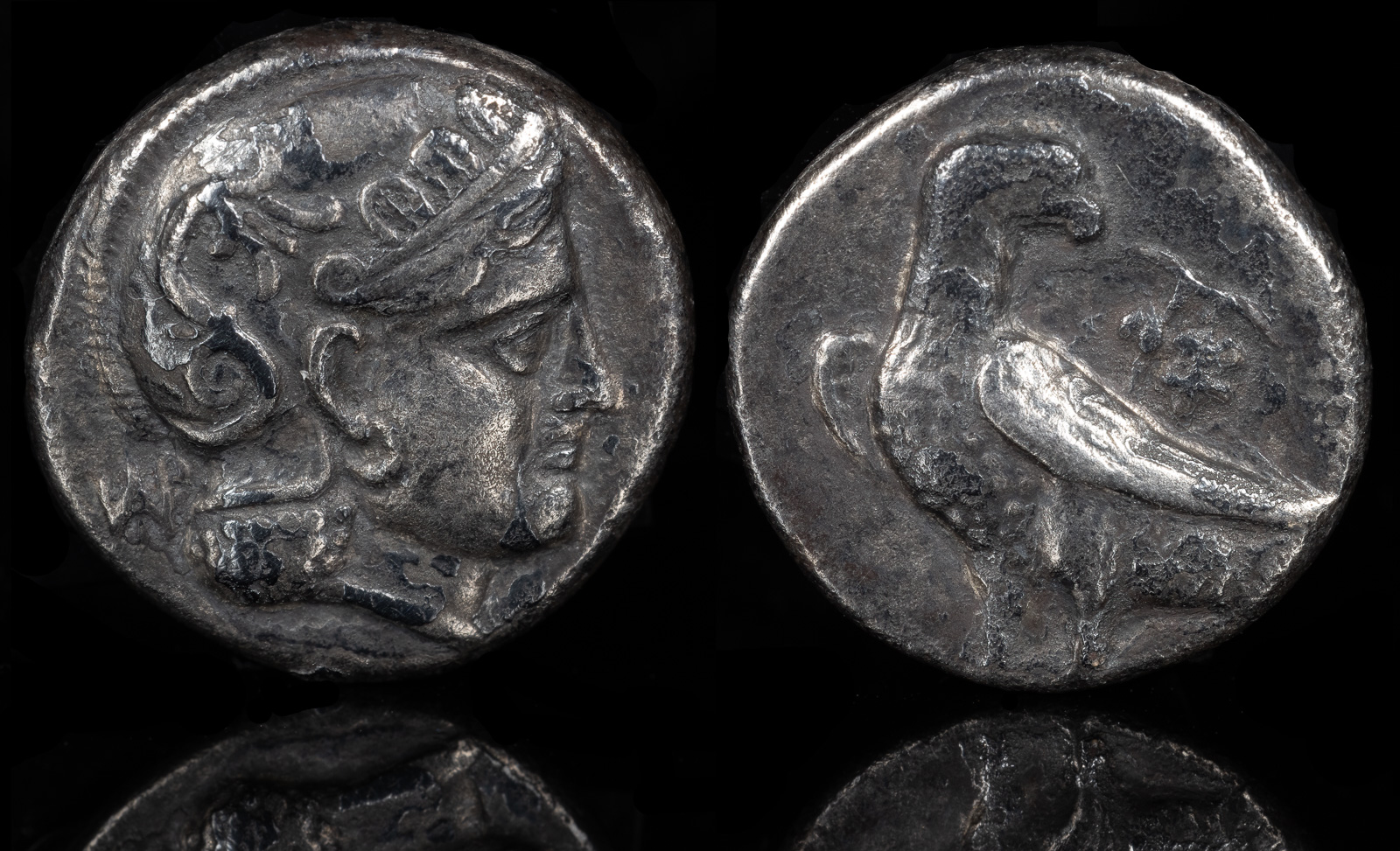
Parthia(?) Andragoras(?), ‘Eagle Series’
circa 246-238 BCE
AR Drachm. Hekatompylos(?) 3.33g, 14mm, 6h.
Local standard. Head of Athena to right, wearing earring, necklace, and crested Attic helmet decorated with three olive leaves over visor and a spiral palmette on the bowl; monogram of Andragoras(?) behind / Eagle standing to left, head to right; grape cluster on vine with leaf above.
Roma XIV, 332; Bopearachchi, Sophytes Series 2A; SNG ANS -; Mitchiner -; HGC 12, 8
Ex Neil Collection
Hekatompylos means “100 gates” in both Greek and Persian and is located near modern day Qumis, Iran. The city didn’t actually have one hundred gates, but instead this was a general term for every city with four. It’s kind of like how my kids use to count…1..2..3..4..100.
Alexander the Great visited the city in 330 BCE and it was later the capital of the Parthian Empires.
Strabo mentioned that many earthquakes happened in this area, and eventually that was what finished the city off.
The ruins are in fairly good shape and there have been plans to turn them into a tourist attraction. Today, they may still be visited with some planning.
July
Alexander the Great stops at Hekatompylos.
The Parhi tribe takes Hekatompylos and makes it a capital of the Parthian Empire.
Hekatompylos is the capital of the Arsakid Dynasty.